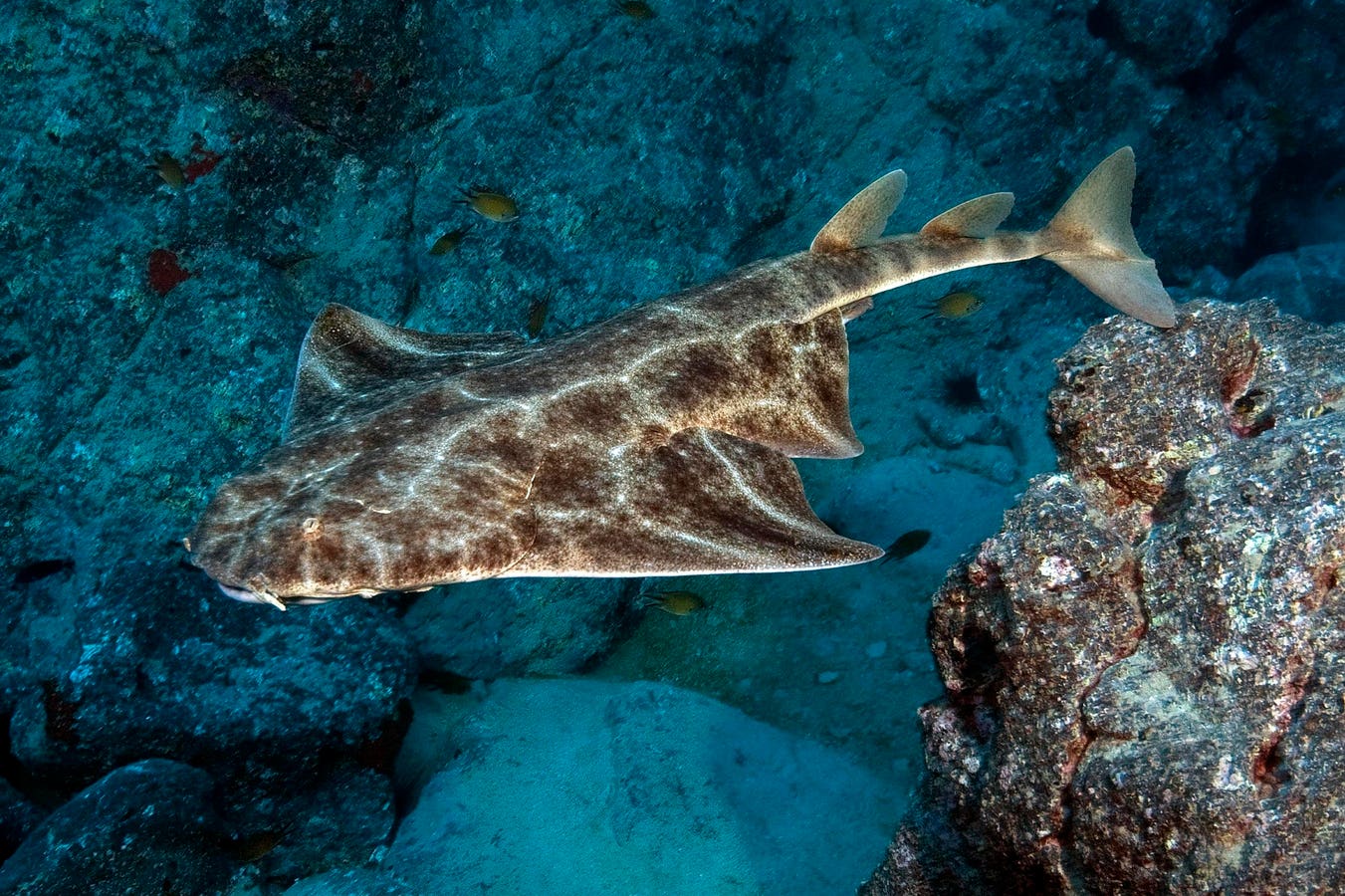As seas heat up, female angelsharks are prioritizing survival over reproduction, leaving their male … More
In the warming waters of the Canary Islands, female angelsharks are making a difficult choice: either skip the mating season, or risk overheating. New research reveals that rising ocean temperatures are disrupting the natural mating patterns of these Critically Endangered sharks, potentially jeopardizing the future of the species.
The study, led by scientists from Lancaster University and the Angel Shark Project: Canary Islands, used acoustic tracking to monitor the movements of more than 100 individual angelsharks between 2018 and 2023. Over those five years, researchers consistently found both males and females gathering in the La Graciosa Marine Reserve off Lanzarote each November and December.
But 2022 broke the pattern.
It was in this year that an extreme marine heatwave pushed sea surface temperatures above 74.8°F (23.8°C), with conditions staying hotter than 72.5°F (22.5°C) nearly three times longer than usual. This heatwave overlapped with the angelsharks’ entire breeding season, which typically kicks off in late autumn when waters are cooler. The result? While male presence peaked on schedule, female sightings were scarce. In fact, females largely abandoned the species’ traditional mating grounds, and the data showed a strong link between female angelshark activity and cooler water, suggesting that 72.5°F (22.5°C) may be close to their upper thermal limit.
Dr David Jacoby, Principal Investigator from Lancaster University, likened these marine heatwaves to “wildfires of the ocean,” with far-reaching impacts that are only beginning to be understood. Why does this matter? Angelsharks, like most sharks, are ectothermic, meaning their body temperature depends on the surrounding water. Unlike males, who seemed determined to find a mate regardless of conditions, females may be more sensitive to temperature spikes due to the energy demands of reproduction. Carrying and developing young requires a lot of metabolic regulation, and excess heat may push their physiology past a safe threshold. Faced with the choice between reproduction and self-preservation… the females appear to be choosing the latter. Jacoby noted that the observed behavioral differences between sexes during extreme temperature events could have serious implications for the species, and lead author of the study Dr. Lucy Mead, a researcher at ZSL’s Institute of Zoology and Lancaster University, agreed: “The fact that environmental extremes are driving differing male and female arrival times at coastal mating sites is of particular concern for this Critically Endangered species.”
Squatina squatina, commonly known as the angelshark, is a Critically Endangered species of shark … More
The Canary Islands represent one of the last strongholds for angelsharks (Squatina squatina), which were once widespread across European coasts but have now vanished from much of their former range. Here, adults and juveniles are still regularly seen, and the species has become a flagship for the local diving tourism industry. But even in this refuge, sightings are becoming less reliable. In just a few years, the number of hot days in the region has steadily increased from 30 days above 72.5°F (22.5°C) in 2019 to 85 such days in 2022. These elevated temperatures now extend well into what used to be the cooler season, narrowing the window when mating can safely occur. “Our concern is that key areas may become inhospitable for females,” Mead said. “These findings have important implications for how we conserve this highly threatened species in a warming world.”
The team believes conservation strategies must begin factoring in these behavioral shifts, especially as climate extremes become more frequent and severe. And co-lead Eva Meyers from the Leibniz Institute stressed that this research underscores why long-term monitoring of critical habitats like the Canary Islands is so vital. “These findings are a reminder of how climate extremes are already reshaping the behaviour of threatened marine species,” Meyers stressed, calling for more urgent protection of these areas, not only for angelsharks but for the broader marine ecosystems they support. Angelsharks are ambush predators that help maintain balance in coastal food webs, so if their populations collapse, the effects could ripple outward in unpredictable ways.
“It’s important to understand how changes in the ocean’s physicochemical conditions can affect the [all] species that inhabit coastal ecosystems,” agreed Dr. David Jiménez Alvarado of the University of Las Palmas de Gran Canaria. “These environmental shifts may alter the habitat use and behaviour of key predatory species that play a crucial role in maintaining trophic balance. Since many of these species are already globally threatened, studying how climate-related stressors impact their ecological function is essential for developing effective conservation and management strategies.” For threatened marine species like the angelshark, which are already teetering on the brink, even small shifts in behavior can have large consequences.
As the world focuses on land-based climate impacts, it’s easy to overlook what’s happening beneath the waves. But the ocean is warming too — and quickly. The choices angelsharks are making now, between mating and survival, reflect a sinister truth: marine life is adapting… but not always in ways that ensure its future. If we’re serious about conserving ocean biodiversity, we need to pay attention to these warning signs and act before more species are pushed past their limits.









